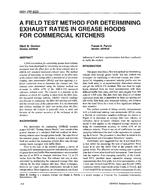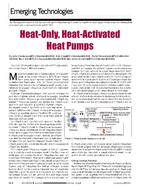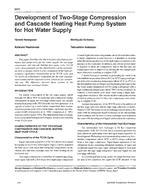Because computer control operates on sampled data, z-transforms serve a similar purpose that the Laplace transforms provide for continuous control . This paper reports insight provided by z-transforms and how controller performance predicted by z-transforms compares with experimental results for a discharge-air-temperature controller. The root-locus technique using z-transforms can predict the gain limits that must be observed to keep the loop stable. Further strengths of the root-locus technique using z-transforms permit the construction of control algorithms to give the desired rise time, settling time, and damping ratio. The control algorithm would thus not be limited to strict proportional, proportional-integral, or proportional- integral-derivative control. The z-transform analysis assumes a linear system, although it does accommodate time delays. The degree of nonlinearity of the hardware influences the fidelity of the mathematical representation.
Units: Dual
Citation: Symposium, ASHRAE Transactions, 1986, vol. 92, pt. 1B, San Francisco
Product Details
- Published:
- 1986
- Number of Pages:
- 18
- File Size:
- 1 file , 1.4 MB
- Product Code(s):
- D-SF-86-04-3


